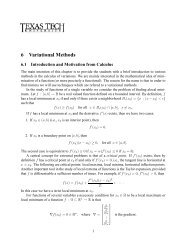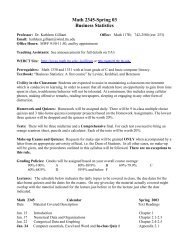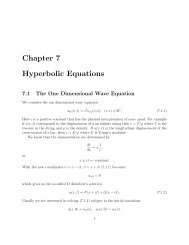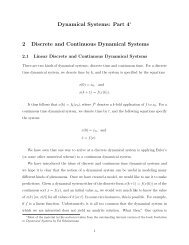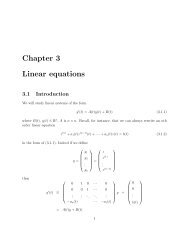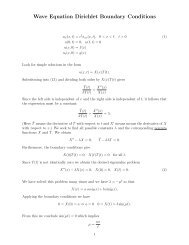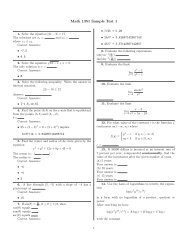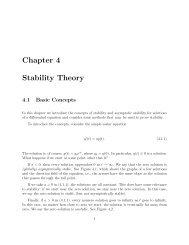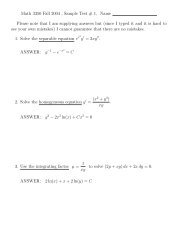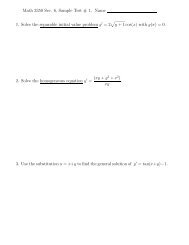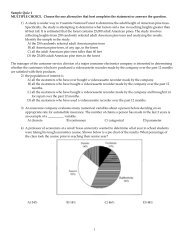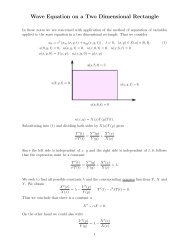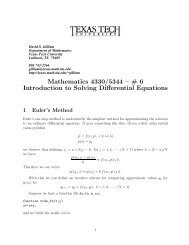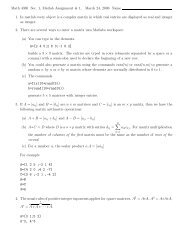Chapter 6 Partial Differential Equations
Chapter 6 Partial Differential Equations
Chapter 6 Partial Differential Equations
You also want an ePaper? Increase the reach of your titles
YUMPU automatically turns print PDFs into web optimized ePapers that Google loves.
28 CHAPTER 6. PARTIAL DIFFERENTIAL EQUATIONS<br />
thus, as a function, u is not well defined. More specifically, recall that our solution is defined<br />
by<br />
u(x, t) =ϕ(ξ) where x = ϕ(ξ)t + ξ.<br />
The characteristics are described by<br />
⎧<br />
⎨ 2t + ξ, ξ < 0<br />
x = (2 − ξ)t + ξ, 0 ≤ ξ ≤ 1 .<br />
⎩<br />
t + ξ, ξ > 1<br />
We can compute that the characteristics intersect at<br />
((2 − ξ)t + ξ) ∣ ∣<br />
ξ=0<br />
=(t + ξ) ∣ ∣<br />
ξ=1<br />
,<br />
or 2t =1+t, i.e., t =1. Fort1)<br />
t<br />
t =1<br />
x = t +1<br />
x =2t<br />
u =2<br />
(ξ,0)<br />
u =1<br />
x<br />
Solution<br />
If 0 ≤ ξ ≤ 1 the characteristic passing through (ξ,0) is x =(2− ξ)t + ξ which implies<br />
ξ =(x − 2t)/(1 − t) and so<br />
( ) x − 2t<br />
u(x, t) =2− = 2 − x , 2t ≤ x ≤ t +1, t < 1.<br />
1 − t 1 − t<br />
u<br />
t =1<br />
u =2<br />
t<br />
u =1<br />
x



